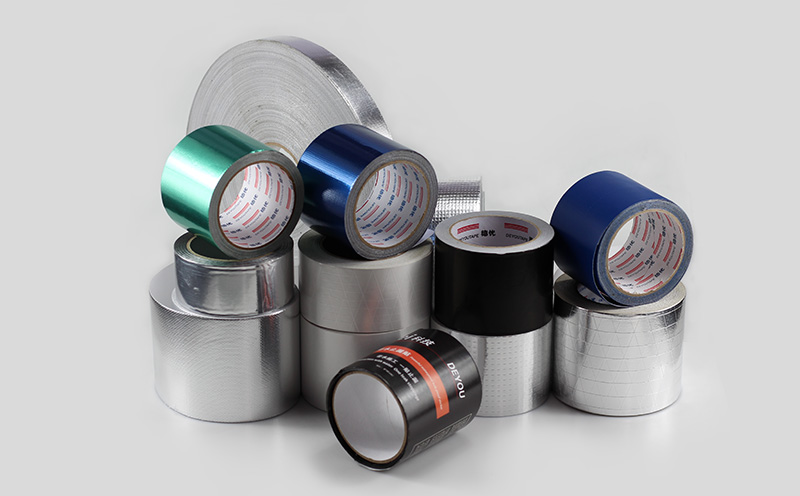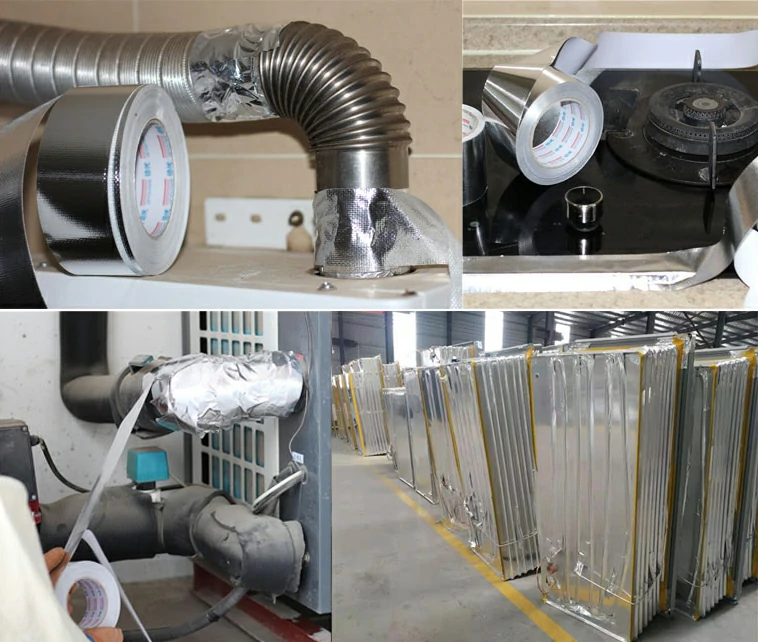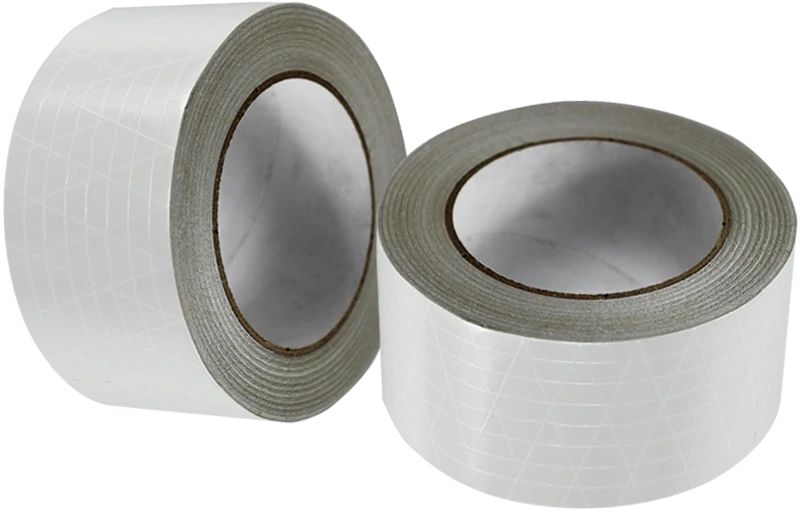Aluminum foil tape is a specialized adhesive tape that has unique properties tailored to specific tasks, particularly in industries like construction, HVAC, electrical, and automotive applications.

Physical Properties of Aluminum Foil Tapes:
1. Backing Material (Aluminum Foil):
Material: The backing of the tape is made of a thin layer of aluminum foil, which is lightweight, flexible, and highly resistant to a variety of elements like heat, moisture, and chemicals.
Corrosion Resistance: Aluminum foil is resistant to corrosion and oxidation, making it ideal for outdoor or high-humidity environments.
Reflectivity: Typically silver due to the aluminum foil, reflects light and heat effectively, which makes it ideal for thermal insulation applications.
2. Adhesive:
Type: Aluminum foil tape is generally equipped with a pressure-sensitive adhesive (PSA), which adheres to surfaces when applied with pressure.
Peel Adhesion: How strongly it resists being peeled off. Higher values mean a stronger bond.
Tack: The initial stickiness on contact. High tack is useful for quick application and irregular surfaces.
Surface Compatibility: The adhesive is designed to bond to smooth, non-porous surfaces, as well as irregular or rough surfaces like insulation or ducts.
3. Thickness and Width:
Aluminum Foil Thickness: Measured in mils or microns, affecting durability, conformability, and barrier properties. The foil itself is usually thin but durable, typically in the range of 0.05 mm to 0.2 mm thick. A thinner foil will be more flexible, while a thicker foil may offer enhanced strength and durability.
Thickness of Adhesive Layer: The adhesive layer can range from 0.03 mm to 0.15 mm, depending on the type and purpose of the tape. Thicker layers often provide a stronger bond, but can also be less flexible.
Width: Aluminum foil tape is available in a variety of widths, commonly ranging from 0.5 inches (12.7 mm) to 4 inches (101.6 mm). Wider tapes cover more surface area at once, which is useful in larger applications like sealing ducts.
4. Mechanical Properties:
Tensile Strength: The tensile strength of aluminum tapes refers to the maximum amount of force the tape can withstand before breaking. Higher tensile strength is ideal for high-stress or structural applications, such as sealing HVAC ducts.
Elongation: How much it can stretch before breaking. Useful for conforming to irregular shapes.
Puncture Resistance: Ability to withstand punctures. Enhanced by reinforcing layers like scrim.
Tear Resistance: Ability to resist tearing. A good aluminum foil tape will offer a balance between flexibility and resistance to mechanical damage.
5. Durability:
Temperature Resistance (Service Temperature, Application Temperature): The adhesive must maintain its strength across a wide range of temperatures. Depending on the product, it can withstand temperatures from -40°F to 300°F (-40°C to 150°C), making it useful in both cold and hot environments. Crucial for performance in extreme environments like HVAC systems.
Weather Resistance: The tape's ability to withstand exposure to outdoor elements like UV, temperature fluctuations, and moisture without degrading.

How to Select the Optimal Aluminum Foil Tape Based on Properties:
Selecting the optimal tape involves matching the tape's properties to the specific requirements and conditions of the application:
Identify the Application: What will the tape be used for? (e.g., sealing HVAC ducts, insulating pipes, creating a vapor barrier, outdoor use).
Consider the Environment: What are the temperature extremes, humidity levels, and exposure to UV or chemicals?
Determine the Substrate: What material(s) will the tape be applied to? (e.g., metal ducts, insulation facing, plastic sheathing). The tape's adhesive must be compatible with the substrate.
Assess Required Performance: What level of adhesion strength, tensile strength, barrier protection, and temperature resistance is needed for the application to be successful and durable?
1. Application Environment:
For high-temperature applications, look for tapes designed to withstand elevated temperatures, such as those with a temperature range of up to 300°F (150°C).
For use in humid or wet environments, choose a tape with excellent moisture resistance and UV protection.
If working in a cold environment, you might want a tape that remains flexible and maintains its adhesive properties even at low temperatures.
2. Bonding Surface:
If you're working with metal surfaces, the adhesive should offer a strong bond to non-porous, smooth materials.
For insulation and ductwork, a thicker aluminum foil tape with a strong adhesive will help ensure long-term sealing.
3. Durability and Strength:
For high-stress applications (e.g., sealing under hood automotive components or in HVAC systems), choose aluminum foil tape with higher tensile strength and tear resistance.
For temporary fixes, consider a tape with a medium-strength adhesive that allows for easy removal.
4. Reflectivity Needs:
If thermal insulation or heat reflection is a priority, opt for aluminum tapes that has a higher degree of reflectivity and a smooth, shiny surface.
5. Width and Thickness:
Choose a wider tape (2-4 inches) for larger areas (e.g., sealing ducts), while narrower tapes (0.5-1 inch) are better for more precise applications like sealing seams or smaller components.
The thickness of the foil impacts its strength. Thicker tapes are better for more demanding industrial applications, while thinner tapes are more flexible and easier to manipulate.
Conclusion:
To select the optimal aluminum foil tape, you need to align its physical properties with the requirements of your specific application. If you need heat resistance, moisture-proofing, or a durable, long-lasting bond, aluminum foil tape is often the best choice. Always consider factors like temperature range, adhesive strength, durability, and flexibility when making your selection.
If you have any question about aluminum foil tapes, please contact us , we will be reply you in on time.

